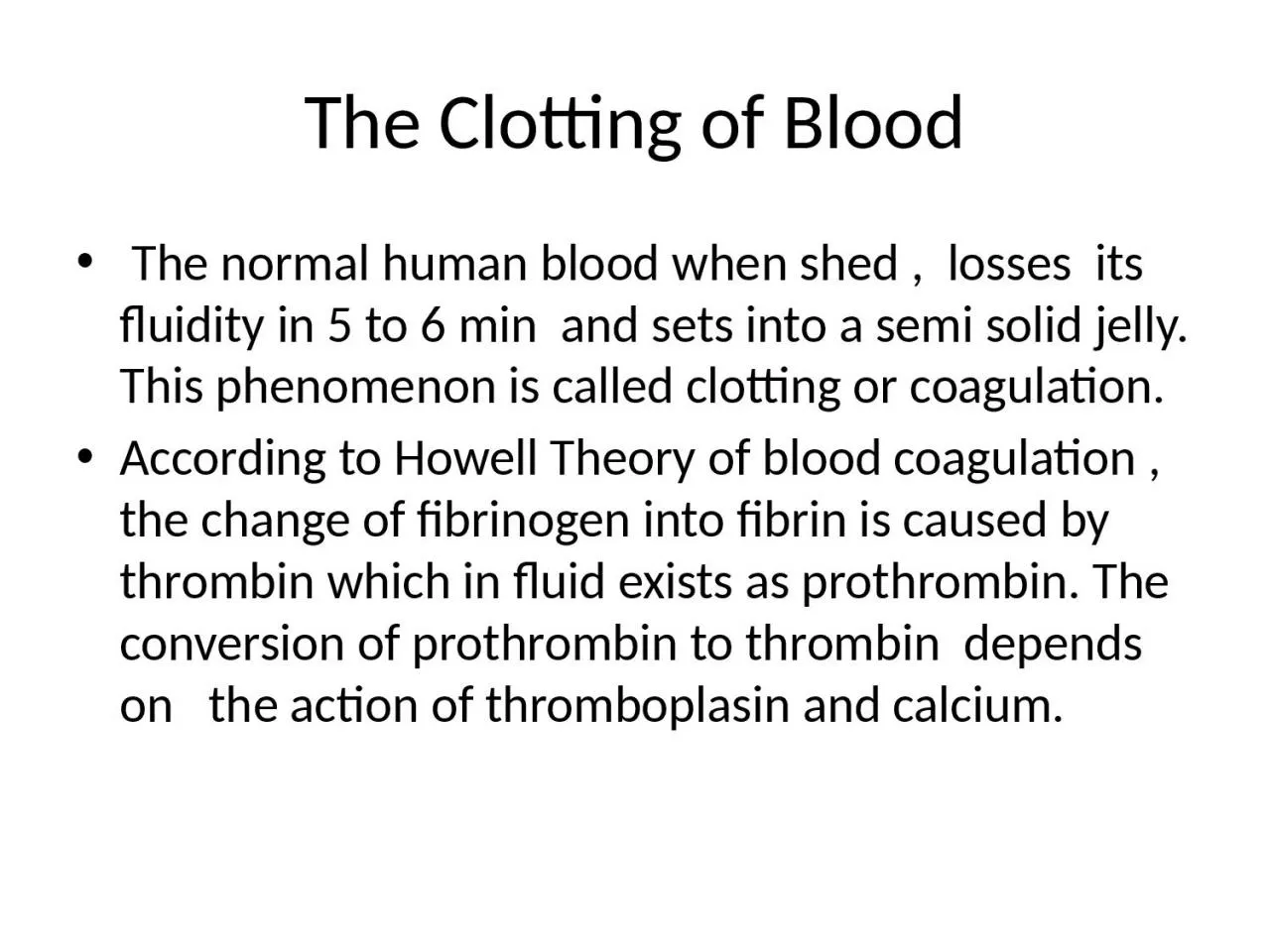

According to Howell Theory of blood coagulation the change of fibrinogen into fibrin is caused by thrombin which in fluid exists as prothrombin The conversion of prothrombin to thrombin depends on the action of thromboplasin and calcium ID: 998516
Download Presentation The PPT/PDF document "The Clotting of Blood The normal human ..." is the property of its rightful owner. Permission is granted to download and print the materials on this web site for personal, non-commercial use only, and to display it on your personal computer provided you do not modify the materials and that you retain all copyright notices contained in the materials. By downloading content from our website, you accept the terms of this agreement.
1. The Clotting of Blood The normal human blood when shed , losses its fluidity in 5 to 6 min and sets into a semi solid jelly. This phenomenon is called clotting or coagulation.According to Howell Theory of blood coagulation , the change of fibrinogen into fibrin is caused by thrombin which in fluid exists as prothrombin. The conversion of prothrombin to thrombin depends on the action of thromboplasin and calcium.
2.
3.
4. Mechanism
5. Mechanism clot formation involves interplay of two kinds of enzymatic pathways : Intrinsic and Extrinsic pathway that coverage on a common pathway resulting in the production of fibrin clot.
6. Blood Clotting FactorsI FibrinogenIIProthrombinIII ThromboplastinIV calciumV ProaccelerinVIIProconvertinVIII Antiheamophilic globulinIX Christmas Factor
7. X Stuart FactorXI plasma thromboplasin antecedent(PTA)XII Hageman factorXIII Fibrin Stabilising factor